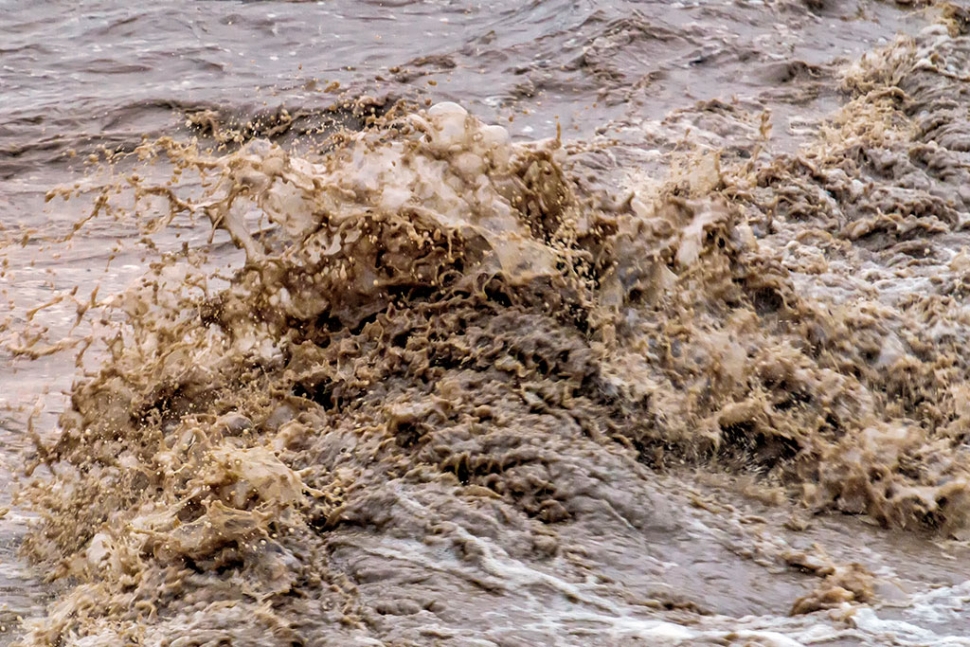|
Focus on Photography
 Photo of the Week: "Violent Sespe Creek upheaval" by Bob Crum. Photo data: Canon 7DMKII camera, manual mode, Tamron 16-300mm lens @110mm, exposure; ISO 5000, aperture f/11, shutter speed 1/200th of a second. By Bob Crum — Wednesday, January 30th, 2019
A matter of intentions
 Bob Crum The phenomenal super blood wolf moon lunar eclipse was hyped as a must watch event. Many of you watched. Answering my query, I wasn't surprised to hear that many of you agreed that 'twas not spectacular. However, others asked: Where in the photo is the man-in-the-moon churning green cheese? Good grief, I need to get a 1,000mm lens. The photo of the week is a revisit of part of Sespe Creek after the recent storm. The storm that produced a deluge of storm-water runoff throughout the Sespe Creek watershed causing Sespe Creek to 1) become extraordinarily muddy and 2) rise quickly to a raging torrent. I witnessed many who stopped on the Old Telegraph Road bridge over the Creek's east branch (actually the so-called overflow) and shot an overview photo to capture a broad expanse of the creek. I also have that ho-hum image. But such photos don't convey any sense of the enormous power of the turbulent creek as it roars downstream to the Santa Clara River. Recall the many instances when I stated that a photo that tells a story without words is not only photojournalism, it's usually a more stimulating photo. A roaring Sespe Creek is exciting, but something else is quite extraordinary if one would look with photographer's eyes. (Remember that topic?) Stop and take a few minutes to watch the roaring torrent. Besides the loud din-and it was quite loud-you'll see the roaring creek became a contortionist at various locations. Over decades of torrential rains, large boulders have ended up in many parts of the creek bed. After a storm, the water rises and the flow rate increases. When it hits an unmovable boulder, the water protests as it's forced to go around and/or over it. In the process, it contorts in numerous ways. Like snowflakes, no two splashes identical. Look closely at these areas of hyperactivity and you'll see many fabulous photo ops. There's a massive boulder in the creek just north of the railroad bridge. It causes an enormous upheaval of the water distorting it in interesting and spectacular ways creating an exciting display. After the perfunctory overview waterscape photos, I watched the chocolate milk for several minutes and envisioned the photo I wanted to make. With the onset of dusk, I needed to act quickly. ISO of 5000 was required to compensate for the low light at an f/11 aperture. Selecting the shutter speed was a quandary. Ultimately I selected 1/200th of a second to show some blur indicating fast flowing water. The result is the photo of the week. The point is to demonstrate that by understanding the relationship between ISO, aperture and shutter speed, the photographer can create a photo for a specific purpose. I wanted to capture the enormous forces at play. BAM! Water slams into the boulder! BOOM! Unmovable boulder says not today H²O! Water heaves and screams in agony! My challenge: Capture the forces of nature. And of course, regular readers know how much I relish a photographic challenge. Another purpose of this exercise is to illustrate, again, the benefits of acquiring photography eyes. Take time to look around. Observe! 'See' and engage the right hemisphere of your brain that performs tasks related to creativity and the arts. After all, photography is about creating photos! I created the photo of the week as intended, i.e., a photo illustrating dynamic hydraulic forces. Did I succeed? That's up to you to decide. Happy photoing. Send comments, suggestions and/or questions to: focusonphotography!@earthlink.net |
